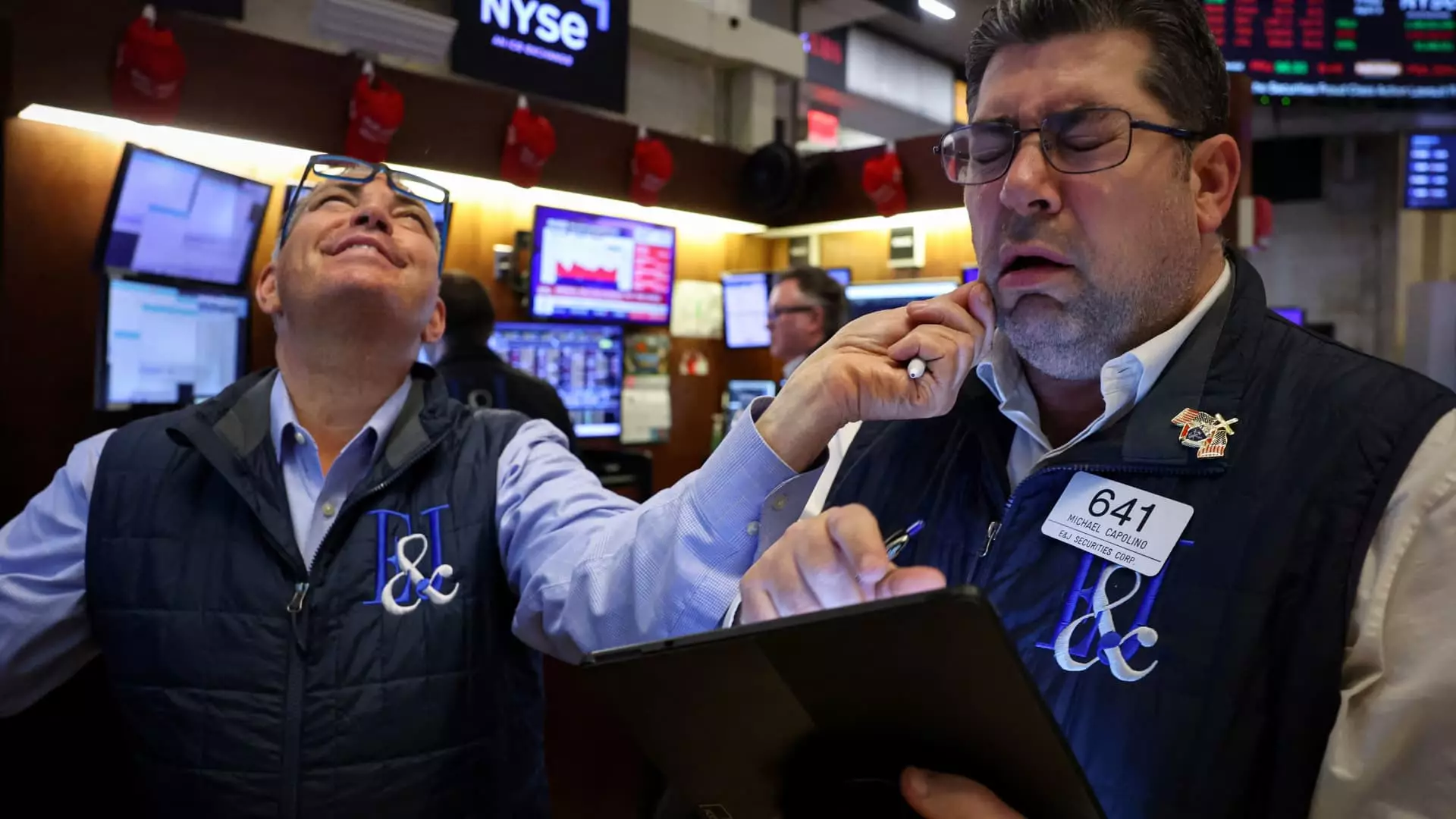The business landscape is fraught with uncertainty, a reality brought into glaring focus by the recent trade policy decisions of President Donald Trump. His administration’s move to impose tariffs has created a ripple effect, transforming economic confidence into a battleground of volatility. Initially, many experts believed that the repercussions of such tariffs could be steered into manageable territory. Yet, as markets unfolded post-announcement, we witnessed a far more calamitous fallout than previously anticipated.
What was predicted as a mere jolt has morphed into an outright crisis. The intention behind these tariffs appears to be an attempt to reshape global trade by taking an aggressive stance against other nations. However, this approach lacks the finesse required for economic diplomacy, resembling a blunt force rather than a strategic maneuver. The ensuing chaos not only rattled international relations but also sent shockwaves through domestic markets, where investors reacted with panic.
Gleeful Announcements and a Looming Crisis
President Trump’s delivery of these tariff plans showcased a disturbing mix of pride and bravado. As he revealed his intention to impose tariffs, he seemed almost revelatory, citing goals to “pry open foreign markets and break down trade barriers.” Yet, this jubilation contradicts the gravity of the economic consequences. The U.S. effective tariff rate was set to explode from a modest 2.5% to levels reminiscent of the tumultuous era pre-World War I, raising alarms about the potentially harmful implications for global trade dynamics.
These tariffs, initially pegged at a 10% threshold across all U.S. trading partners, have led to an astonishing escalation—to figures that evoke haunting memories of historical economic calamities. The Smoot-Hawley tariffs of 1930 serve as a grim reminder of the dangers associated with protectionist measures, which many economists argue exacerbated the Great Depression. Yet, our present situation is marred by a broader geopolitical malaise, with retaliations from nations like China and the European Union looming ominously on the horizon.
Economics 101 Missed: A Blunt Instrument of Fear
What further compounds the situation is the apparent lack of coherent economic strategy underpinning the tariffs. Reports indicated that the formula used to assess which imports would face higher tariffs was rudimentary at best. Dividing trade deficits against export values was less about crafting a fair trade strategy and more akin to wielding a massive hammer on the complexities of international economics. This simplistic methodology, described as “rough justice” by the Center for Strategic and International Studies, underscores the potentially disastrous fallout from ill-considered policy.
Investors, understandably unnerved by the opaque calculus of the tariffs, responded by abandoning stocks. With market valuations tumbling, the sanguine idea of the Federal Reserve swooping in to cushion the blows seemed increasingly inconceivable. Fed Chair Jerome Powell’s indication that these tariffs would likely hinder economic growth while stoking inflation left investors scrambling. What was once viewed as a secured future suddenly became an enigmatic maze of unpredictability.
A Policy Mistake of Historic Proportions
Commentators and economists alike expressed disbelief over the implications of Trump’s decisions. Observers like Wharton School professor Jeremy Siegel have labeled these tariffs as a “self-inflicted wound” – a harsh indictment that encapsulates not only the economic misjudgment but also the potential long-term damage inflicted on U.S. credibility in international relations. The rhetoric that somehow blames foreign entities for domestic economic woes oversimplifies a complex problem and distracts from the necessary dialogue that promotes mutual trade benefits.
Amidst this tumult, it’s crucial to evaluate whether the tools wielded by the Trump administration can yield any positive results. While he has touted potential negotiations with nations like Vietnam and made overtures to recalibrate relations with China, such efforts sit tentatively against the backdrop of market turbulence. Will these overtures lead to tangible progress, or merely serve as political theater?
In a State of Perpetual Uncertainty
The current economic predicament is a reflection of short-sighted policies that echo a hesitance to engage in the nuanced art of negotiation. Such rigidity remains a great source of anxiety within the markets, prompting a growing concern among both investors and economists about the stability of the U.S. economy in a globalizing world. The prospect of a drawn-out trade war is damaging not only reputationally but signals a willingness to forego collaboration for confrontational tactics.
As uncertainty reigns, it is crucial to seek a path forward that embraces democratic ideals and a cooperative global economy rather than impulsively retreating behind barriers of protectionism. The hope lies in recognizing that sound economic policy should prioritize dialogue and mutual benefit rather than ego and isolation.


Leave a Reply